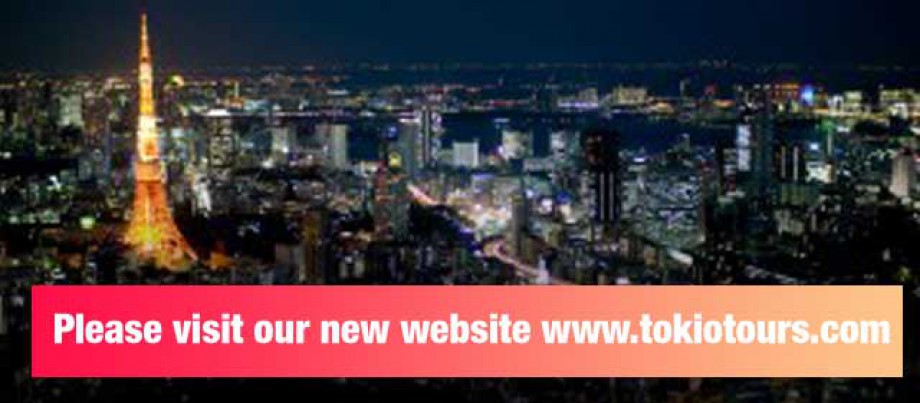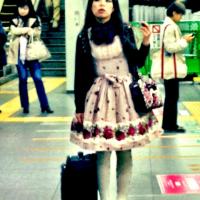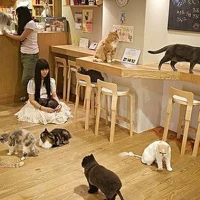
Autobiography of a Geisha (芸者,苦闘の半生涯 Geisha, kutō no hanshōgai literally Geisha, Half a Lifetime of Pain and Struggle), is a book by Sayo Masuda (ますだ • さよ Masuda Sayo,kanji 増田 小夜). It was first published in Japan in 1957, and the English translation by G. G. Rowley was published in 2003. Masuda wrote her autobiography between the years of 1956 and 1957 in response to a magazine ad for a non-fiction women’s writing competition. She had never learned to read more than hiragana, and wrote her entire book in it. Her editors carefully worked to convert her work into the standard kanji while preserving the feeling of her original writing.
Early life
As a child Masuda lived as a nurse-maid in a large farming household near Shiojiri, where she got little to eat, no education, poor sleeping quarters, and was frequently punished. She initially spent most of her time looking after the owners’ young children, but after being caught taking extra melons from the field to feed herself she was forced to do manual labor. During these years other children gave her the derisive nickname “Crane”, as in the winter she was never allowed to wear socks and would lift one leg up and warm her foot on the thigh of the other leg. This nickname was used even when she started as a novice geisha, and Masuda did not learn her own real name until she was hospitalized at the age of 12 and the doctors called her Ms. Masuda.

Life as a geisha
When Masuda was twelve, her mother needed money to pay for her husband’s medical treatment. Her uncle retrieved her from the landowners and sold her to an okiya (geisha house) called Takenoya in Suwa. There, due to her illiteracy and the geisha gave her another nickname, “Low”, which was short for low intelligence, and she was frequently made fun of for her dark, sunburned skin, as a pale complexion was highly valued among geisha. However, Elder Sister Karuta, the second oldest geisha in the okiya, worked with Masuda to help her through her training, starting a lifelong friendship between the two. Soon after Masuda’s arrival, one of the other geisha in the okiya, Takemi, died of peritonitis caused by gonorrhea, and her refusal to seek medical treatment in the hopes of hastening her death greatly influenced Masuda’s perception of living as hell and dying as paradise. Takemi’s death also caused Karuta to drink very heavily, leading to confrontations with the head of the okiya. During one such confrontation, Masuda intervened on Karuta’s behalf; for this, she was thrown down the stairs and her right leg was broken. It was this injury which landed her in the hospital, where she learned her real name.
While Masuda was still recovering the hospital, she and Karuta decided to commit suicide together by throwing themselves in front of a train; however, after Karuta had carried Masuda out on her back to the tracks, they backed out right before it hit them. Karuta stumbled as she fell off the tracks, landing on on Masuda’s broken leg, and the next day an infection set in. It took several days to heal, nearly requiring amputation and ultimately leaving her with a large scar that she was self-conscious of for the rest of her life. Masuda’s real mother came to visit her, but only stayed for four days, leaving Masuda alone in the hospital again. She eventually recovered and returned to the okiya, where she debuted as an apprentice. As she got closer to becoming a full-fledged geisha, her work became increasingly sexual in nature, and she began to get connected with a danna, or patron.
Upon debuting, Masuda underwent mizuage with a man nicknamed Cockeye. After her first time, she was sold four more times under the pretense of having never undergone it, as this made a huge profit for the okiya since many men wanted to be the partner for a geisha’s mizuage. A year later, Cockeye bought out her contract as a geisha and she went to live with him and his mistress. Masuda despised Cockeye, so she convinced him to let her get a job at a factory. There, she caught the eye of a man named Motoyama and they quickly fell in love; however, she was unable to keep their relationship from Cockeye and had to stop seeing Motoyama. Upon receiving a letter stating that he was leaving, that same night she again attempted suicide by trying to drown herself; however, she was pulled out by someone who happened to be fishing nearby.

Seeking a living
After Masuda was released from the hospital, she ran from Cockeye, eventually having to return to Shiojiri to look for family. She managed to locate her aunt and one of her younger brothers. She convinced her aunt to get her a job at the sawmill she worked at, but quickly decided to find a job that could pay better, so she decided to go to Chiba to find Karuta. When she realized she needed to get money for the train fare, the only person she could get it from was Hii, who made her dance naked in return. When she arrived in Chiba, the house she and Karuta were staying in was destroyed in a firebomb raid, She worked several jobs until she was able to get a job at a restaurant. While she was there, she received two marriage proposals, and the second, from the son of the restaurant’s owner, caused Masuda to leave the restaurant, because although she was only 21 at the time she already had a long history as a geisha and felt that she could not risk ruining his reputation by marrying him.
She and her brother joined a group of people foraging for food in the countryside to resell in the city, and there she met a Korean man who gave her another job selling soap. She did this for two and a half years, when in the summer of 1952 her brother contracted intestinal tuberculosis and was hospitalized. His penicillin shots were 600 yen each, and Masuda soon realized that the only way to make enough money for them was to start prostituting. Although she kept her prostitution hidden from her brother, he felt he was placing an undue burden on her and committed suicide. She decided to bury him next to their father, so she decided to return to Shiojiri.
When Masuda returned, she caught a cold and was bedridden with a high fever. Her old lover, Motoyama, had returned to nearby Suwa and was a city councilor; when he heard that she had returned, he sought her out and found her a place to live. Despite the fact that Motoyama had married and had a child, they began regularly seeing each other. Around this time Masuda decided to learn how to read hiragana, and kept a diary of their encounters. However, when elections for city council came near, at the urging of Motoyama’s wife Masuda decided to leave him to improve his chances of being reelected.
She moved to Toyoshina, where Karuta had opened a restaurant, but her longing for Motoyama caused her to start uncontrollably drinking. She became bloated and jaundiced, but continued to drink even after her doctor warned her she would soon die of liver failure if she continued. Despite the urgings of her doctor and Karuta, Masuda decided that she would attempt suicide a third time, and after visiting her brother’s grave, she tried to freeze herself to death, and had almost succeeded when an elderly man found her and rescued her. He convinced her to make one more attempt at having a good living, and she returned to Toyoshina.

Ending
Upon returning to Toyoshina, Masuda got a job as a waitress, and discovered her love for children. She frequently told stories to groups of children in town. Paradoxically, she also played numerous tricks on people around town, trying to humble geisha or anyone she saw holding their status over others. Eventually, she heard that farmers in the area were desperate for people to work the rice fields, and over their protestations she decided to go to work there. When the rice was planted, she was asked by a family to look after their children, where her autobiography ends
In the English version of the book, G. G. Rowley wrote an afterword detailing her attempts to meet Masuda in person. Masuda almost exclusively communicated through her publishers, and at the time of the English translation’s publication in 2003 they had declined Rowley’s request, saying that Masuda wished to keep as low a profile as possible. However, in 2004 Masuda made a personal request for Rowley to visit her in Nagano, making Rowley one of the only people who she agreed to meet with, and afterwards they remained in touch for the rest of Masuda’s life.

Later life
After being a caretaker for several years, Masuda was able to open her own restaurant, and ran it for several decades. She and Karuta, who herself opened and ran a restaurant until three years before her death, remained friends. However, Karuta, who had fought to save Masuda from alcoholism, herself became an alcoholic, and her death in the mid-1990s was a huge blow to Masuda. On June 8th, 2008, Masuda found out she had liver cancer, and she died a few weeks later on June 26th, 2008.
Messages
Throughout her autobiography, Masuda continually projects the idea that parents should be responsible for their children and should not bear children they are not prepared to support. When she found an abandoned six month old baby, she felt the desire to quickly kill it so it would not have to suffer either a slow death or the ignominy of growing up without parents. Though Masuda never got married and never had children, caring for the children of others was always her favorite way to spend her time.
She also vehemently argued against the prohibition of prostitution in Japan. She stated that although no one became a prostitute to enjoy it, it was merely human instinct to find a way to make a living when no other venues were open. Although she agreed it was probably well intentioned, she also stated that she could not have possibly survived if she hadn’t prostituted herself. Furthermore, she argued that simply banning prostitution would not stop people from engaging in it, as people who felt the need to engage in it would inevitably find ways to work around it.
Reception
Although Masuda finished second in the writing competition, after writing Autobiography of a Geisha she was harshly criticized by her community, and eventually had to move to another town.Largely because of this, she almost always communicated with people through her publisher, emphasizing that her goal was only to tell her story and never to become famous, and refused to meet with most people interested in discussing her book. Upon its translation into English, the book received positive reviews from Liza Dalby and Arthur Golden as well as several book reviewers.
Despite several academic reviews, the book has been strangely ignored in many publications about geisha. In her autobiography Geisha, a Life (also known as Geisha of Gion), published in 2002, Mineko Iwasaki claims to be the first geisha to come forward to tell her story. Many scholars echo this claim despite the fact that Masuda’s work was published 45 years before Iwasaki’s.

 Ginza
Ginza Harajuku and Omotesando
Harajuku and Omotesando Roppongi
Roppongi Shinjuku
Shinjuku Shibuya
Shibuya Tokyo Bay
Tokyo Bay

 As a volcanically active country,
As a volcanically active country, 





 Gion Hatanaka, Kyoto
Gion Hatanaka, Kyoto
 Tawaraya, Kyoto
Tawaraya, Kyoto



































